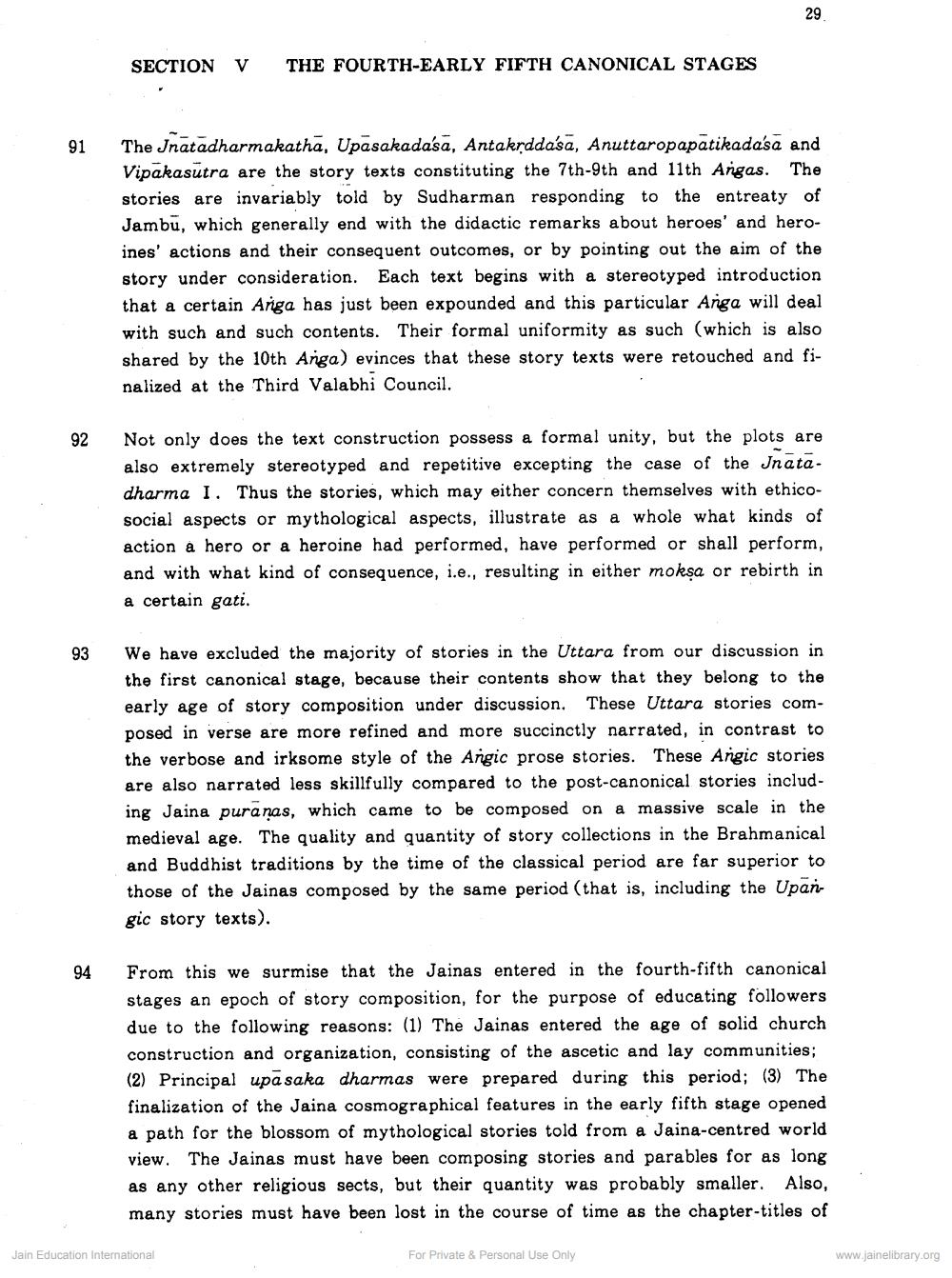________________
SECTION V
THE FOURTH-EARLY FIFTH CANONICAL STAGES
91
The Jnatadharmakatha, Upasakada'sa, Antakrdda'sā, Anuttaropapātikada'sā and Vipakasutra are the story texts constituting the 7th-9th and 11th Argas. The stories are invariably told by Sudharman responding to the entreaty of Jambū, which generally end with the didactic remarks about heroes' and heroines' actions and their consequent outcomes, or by pointing out the aim of the story under consideration. Each text begins with a stereotyped introduction that a certain Arga has just been expounded and this particular Ariga will deal with such and such contents. Their formal uniformity as such (which is also shared by the 10th Anga) evinces that these story texts were retouched and finalized at the Third Valabhi Council.
92
Not only does the text construction possess a formal unity, but the plots are also extremely stereotyped and repetitive excepting the case of the Jnatā. dharma I. Thus the stories, which may either concern themselves with ethicosocial aspects or mythological aspects, illustrate as a whole what kinds of action a hero or a heroine had performed, have performed or shall perform, and with what kind of consequence, i.e., resulting in either moksa or rebirth in a certain gati.
93
We have excluded the majority of stories in the Uttara from our discussion in the first canonical stage, because their contents show that they belong to the early age of story composition under discussion. These Uttara stories composed in verse are more refined and more succinctly narrated, in contrast to the verbose and irksome style of the Angic prose stories. These Argic stories are also narrated less skillfully compared to the post-canonical stories including Jaina pura nas, which came to be composed on a massive scale in the medieval age. The quality and quantity of story collections in the Brahmanical and Buddhist traditions by the time of the classical period are far superior to those of the Jainas composed by the same period (that is, including the Upangic story texts).
From this we surmise that the Jainas entered in the fourth-fifth canonical stages an epoch of story composition, for the purpose of educating followers due to the following reasons: (1) The Jainas entered the age of solid church construction and organization, consisting of the ascetic and lay communities; (2) Principal upa saka dharmas were prepared during this period; (3) The finalization of the Jaina cosmographical features in the early fifth stage opened a path for the blossom of mythological stories told from a Jaina-centred world view. The Jainas must have been composing stories and parables for as long as any other religious sects, but their quantity was probably smaller. Also, many stories must have been lost in the course of time as the chapter-titles of
Jain Education International
For Private & Personal Use Only
www.jainelibrary.org




